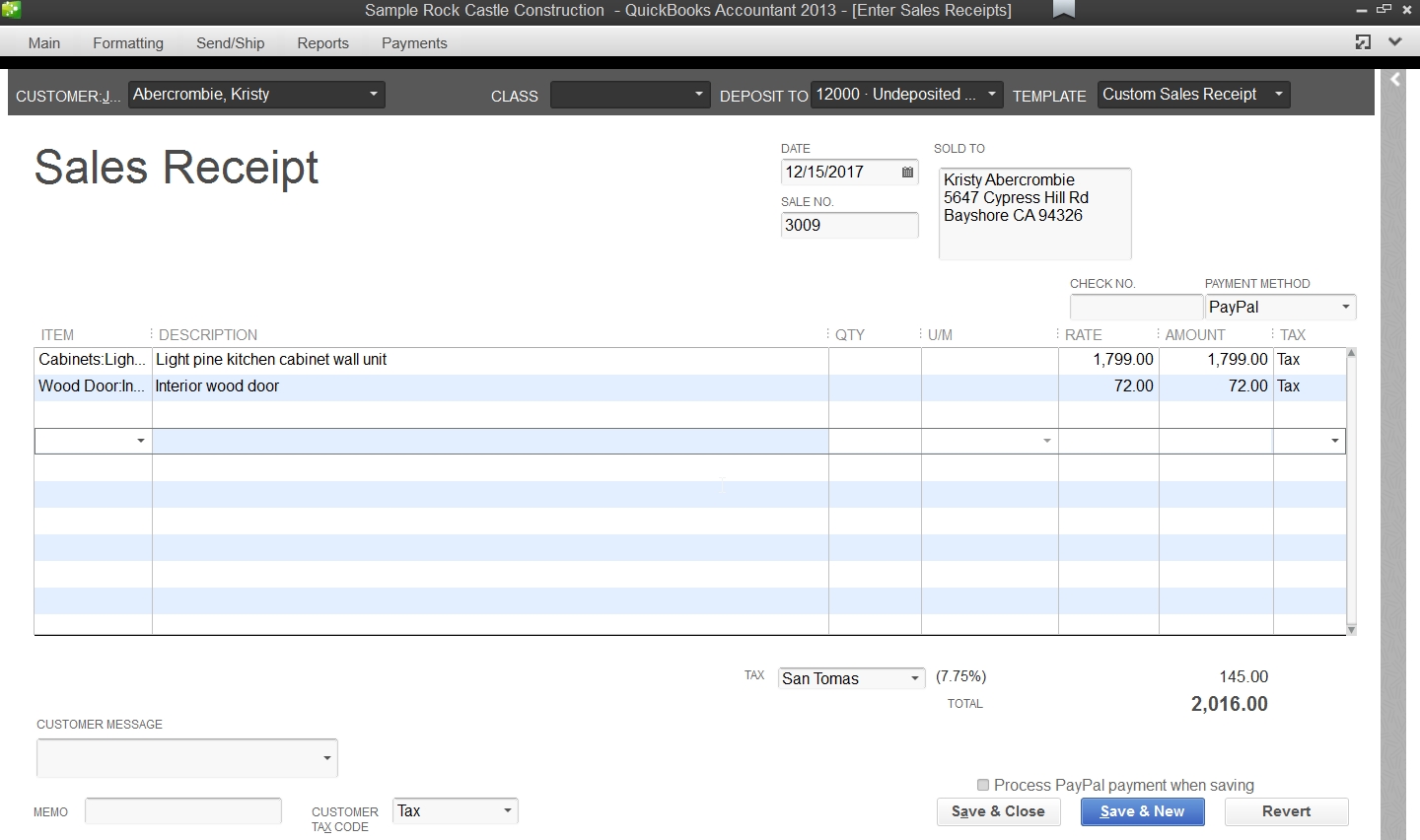

To Create a Custom Report for the “Customer Deposits” Account : Reports : Custom Transaction Detail – On the Display tab, be sure you have date range that would encompass your longest customer deposit period, and in the “Total By” menu, choose “Customer”, then click on the “Filters” Tab and filter by Account: choose the “Customer Deposits Received” Liability Account. Estimates – Jobs, Time & Mileage – Job Progress Invoices vs. Sales Orders: Sales – Open Sales orders by Customer,Ģ. To keep track of what is going on with your customer orders and deposits, I recommend running the following reports:ġ. If you use other sales reports, like sales by rep, keep in mind that the customer deposit amount will be reported as sales on those reports.įor most businesses, however, I prefer the Sales Order/Estimate method because you have a much better system for tracking out-standing customer orders and deposits.

*If you collect and report Sales Tax, you will need to filter your sales tax report to show only income and expense accounts in order to exclude customer deposit amounts from sales tax sales reports. *You may skip the process of creating Sales Orders or Estimates – you simply create a Sales Receipt to the Customer using the Customer Deposit item as I described and then use the same Item on the customer’s invoice as a negative when it is created, and your accounting system will be correct. Now create the invoice and you will notice that the deposit from the sales order or estimate will appear and reduce the customer’s current balance due.

When you are ready to collect the balance from the customer – open the “Create Invoices” window.Ħ. A window will pop up letting you know the customer has an outstanding Sales Order or Estimate – you must now select the Sales Order or Estimate to create your invoice from.ħ. If the terms or pricing have changed since the original creation, you may make these changes directly on the invoice. The Sales Receipt will send the payment to the bank account, or undeposited funds as you specify at the bottom of the Sales Receipt.Ĭheck out my QuickBooks for Contractors Trainingĥ. It is extremely important to finalize this process with the last step which involves invoicing the customer for the balance upon receipt of the products and services. (*if you do not have any information on the customer’s order, you can create an invoice later, just be sure to credit them for their deposit payment!)Ĥ. Create a Sales Receipt to the customer for the deposit amount, using the “Deposit Received” item this time as a positive number. Create the customer’s complete order at the total price they will pay for products or services as an Estimate or Sales Order, entering each line item of products and services they have agreed to purchase at the agreed prices, and enter the final item “Deposit Received” as a negative number. Here is the best way to deal with customer deposits :ġ. Create Current Liability Account on your Chart of Accounts called “Customer Deposits Received”.Ģ. Create an Item on your Item list – the item type “Other Charge” Called “Deposit Received” and map it to the “Customer Deposits Received” Liability Account.ģ. (See my blog article “Important unapplied payments check”.) This process wreaks havoc with your Accounts Receivable and can have serious consequences under-stating your income if not dealt with later. One mistake I see often is receiving a payment and leaving the payment “unapplied” to anything until some later date when an invoice is created.
#QUICKBOOKS SALES RECEIPTS VS SALES ORDER HOW TO#
Many businesses who receive deposits (pre-payments) from customers are not aware of how to process these payments properly.


 0 kommentar(er)
0 kommentar(er)
